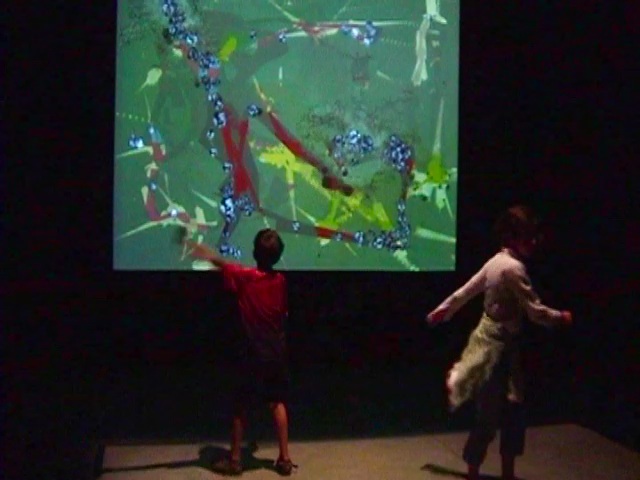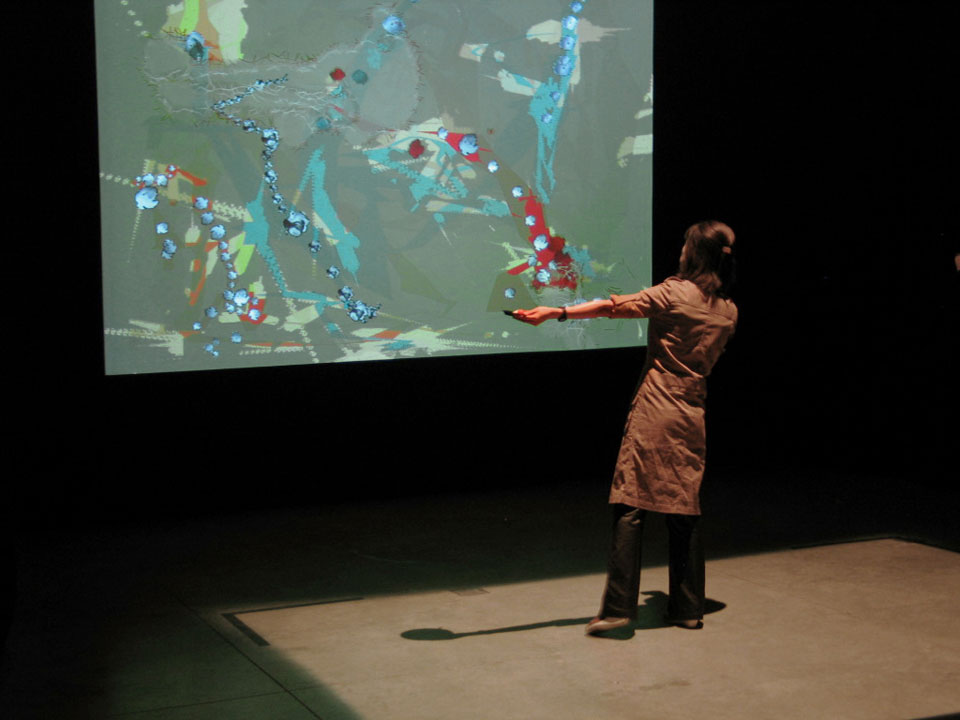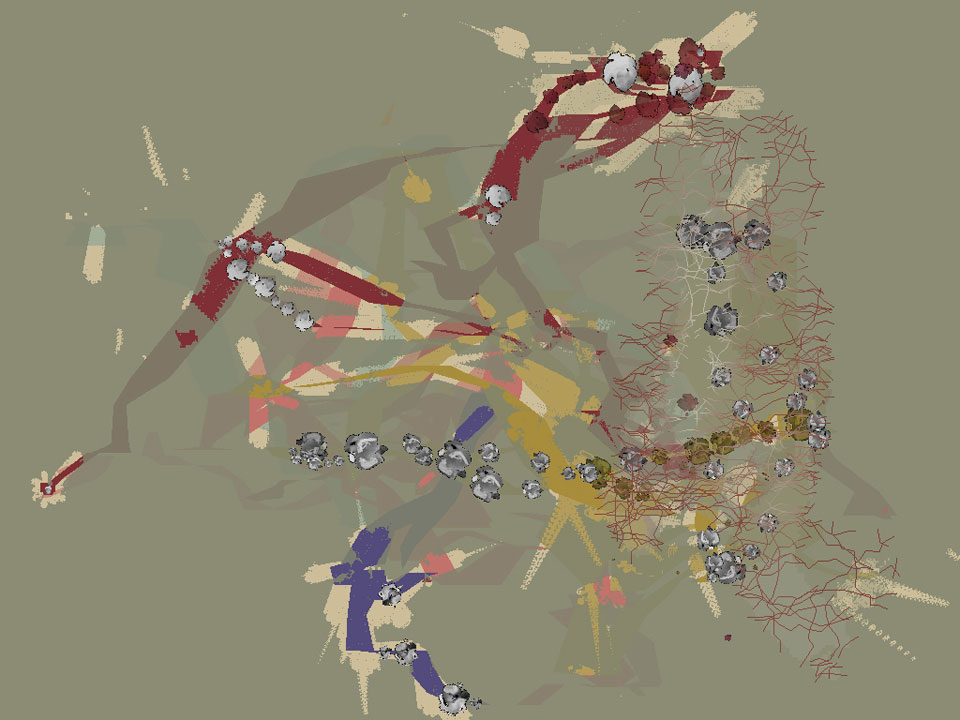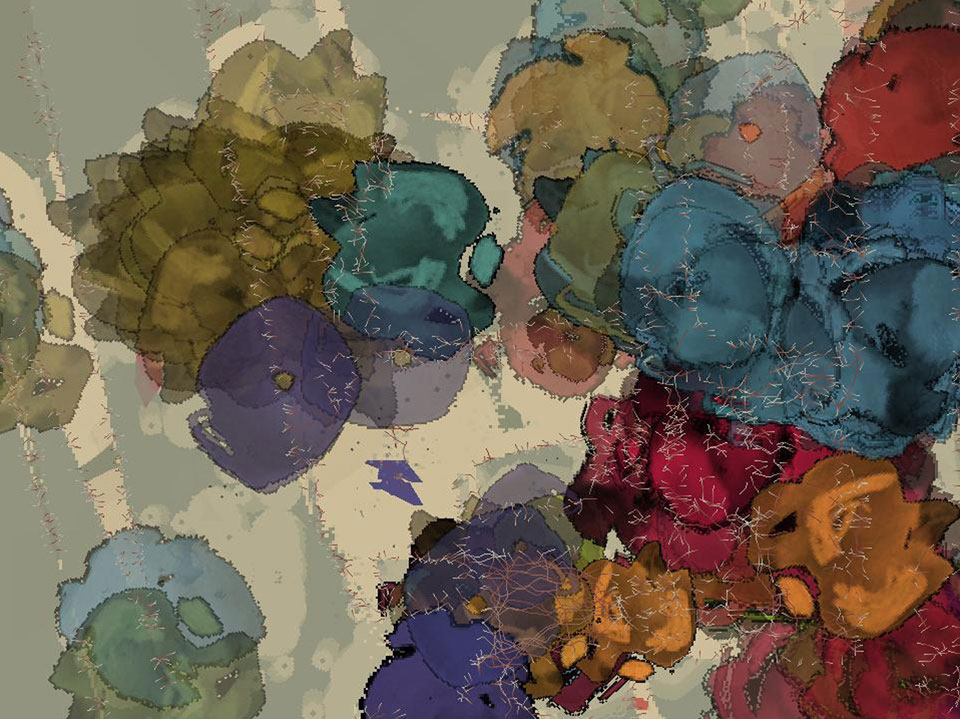Untitled 6 is the sixth piece in Utterback’s External Measures Series. An overhead camera detects movement in the gallery space and a set of software rules generate a live animation in response. While dependent on digital technology, the External Measures installations share a lineage with analog artwork like mobiles and kinetic sculptures. In these works, artists create a framework for possibility between physical parts of the sculpture and forces such as wind and gravity. In Utterback’s work, she similarly composes the possibilities for the system, but through the software rules she writes.
The External Measures Series began with Utterback’s attempts to create interactive paintings, and has evolved as she experiments with the possibilities for hinging computational systems to human movement. The previous piece in this series, Untitled 5, created organic, painterly imagery. Animated marks are both pushed away by, and collect around the edges of people’s silhouettes – creating a delicate tension between expansion and contraction. In contrast, the shapes and colors of Untitled 6 are more bold and graphic. The animated marks race away from people’s borders or get stuck and balloon out – creating an exaggerated cartoon-like sensibility.
In all the External Measures pieces, a varied set of behaviors interact to create a complex and layered composition. Untitled 6 responds immediately to people’s presence in the space by emitting a network of red vein-like lines around one’s body. Quirky black and white marks are drawn along people’s trajectories in the foreground. These paths are also drawn into a partially hidden background layer.
The foreground marks store information about people’s speed and direction, which can be re-accessed at a later moment in time. A second movement over these marks releases them to continue moving with their stored momentum. Reactivated path marks scrape away the grey-green foreground layer of the composition, revealing the bright residue of paths in the background. Moving marks will also stop when they collide with a person, accumulating and growing into ambiguous clots or buds. While released marks scrape away the foreground layer, the presence of one’s body fills this layer back in.
Through a process of kinesthetic investigation, participants can explore the structure and composition of the piece. Their movements affect what is immediately visible, but also the state of the entire system – allowing their actions to engage with future moments as well. At each moment the state of the composition is determined by what has come before, and influences future possibilities. Moments interpenetrate, visually and metaphorically extending their reach.
Exhibition History:
Frist Center for the Visual Arts, Nashville, TN. 2013
Milwaukee Art Museum, Milwaukee, WI. 2008
The Nelson Gallery, UC Davis, Davis, CA. 2008
Art Interactive, Cambridge, MA. 2007
Sun Valley Center for the Arts, Ketchum, ID. 2007
Santa Cruz Museum, UC Santa Cruz, Santa Cruz, CA. 2006
The Beall Center for Art and Technology, UC Irvine, Irvine, CA. 2005









